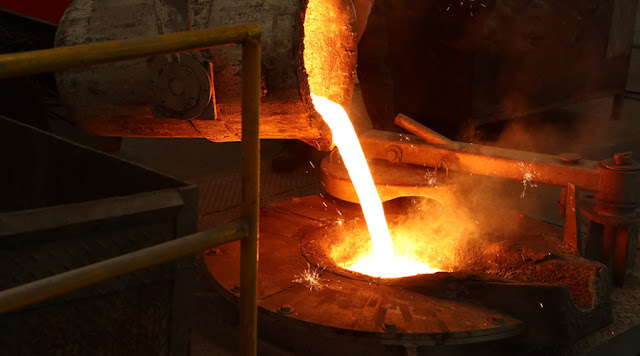The Function of Induction Furnace Drawing
Induction furnaces are an important part of manufacturing, especially in the metal casting process. These furnaces rely on electromagnetic induction to generate heat within metal objects, enabling efficient and precise melting, casting and heat treating.
However, the design of an induction furnace is just as important as its operational function. This is where induction furnace drawing play an important role.
Induction Furnace Drawing are available as blueprints or visual representations of furnace construction, components and specifications. It provides engineers, technicians, and manufacturers with a comprehensive guide to understanding the complexities of furnace design. In this article, we will explore the various features and benefits of induction furnace drawings.
Features of Induction Furnace Drawing
1. Visualization & Communication:
One of the main functions of the design drawing is to visualize and communicate the intended design of the induction furnace. It allows engineers and designers to translate their ideas and concepts into tangible representations that others can easily understand.
This communication tool ensures that everyone involved in the manufacturing process is on the same page, reducing the chance of misunderstandings or mistakes.
2. Accuracy & Precision:
Induction furnace design drawings are created with great attention to detail. They provide accurate measurements, dimensions and specifications for every component and part of your furnace. This level of precision is critical to ensuring the furnace operates efficiently.
By design drawings, manufacturers can produce furnaces that meet the required standards and specifications.
3. Optimization & Efficiency:
Another function of IF design drawings is to optimize the performance and efficiency of the furnace. Through careful planning and design, engineers can identify areas for improvement to increase productivity, reduce energy consumption, and improve overall performance.
Design drawings allow for the incorporation of innovative functions and technologies, thus optimizing the functionality of the furnace.
4. Compliance & Safety:
Design drawings are also a tool to ensure compliance with safety regulations and standards. The drawing includes safety features, such as emergency shutdown switches, protective barriers and ventilation systems, which are critical to the safe operation of the furnace.
By design drawings, manufacturers can ensure that furnaces meet all safety requirements to protect workers and equipment.
5. Troubleshooting & Maintenance:
Induction furnace drawing are invaluable when it comes to troubleshooting and maintenance. If there is a problem with the furnace, a technician can refer to the design drawings to identify the problem area and make the necessary repairs.
Additionally, the diagram provides a reference for routine maintenance tasks such as cleaning, lubricating and replacing parts. This ensures that the furnace remains in top condition, minimizing downtime and maximizing productivity.
6. Cost-effectiveness:
Design drawings also contribute to cost-effectiveness in the manufacturing process.
With detailed furnace design blueprints, manufacturers can accurately estimate the costs associated with the materials, labor, and equipment required for construction.
This allows for better budgeting and resource allocation, ensuring projects stay within desired financial constraints.
7. Future Modifications & Upgrades:
As technology advances and industry requirements change, induction furnaces may need to be modified or upgraded to meet new needs. Design drawings provide reference for future modifications and upgrades.
Engineers can easily identify areas that need modification or improvement without affecting the overall structure and function of the furnace.
In conclusion, induction furnace drawing play a vital role in manufacturing. They serve as visual representations of furnace structures, components and specifications, enabling effective communication and understanding between engineers, technicians and manufacturers.
These drawings ensure accuracy, precision, compliance with safety regulations and optimization of furnace performance. They also aid in troubleshooting, maintenance and cost-effective manufacturing.
With the help of design drawings, induction furnaces can be built, operated and maintained to meet the highest standards of efficiency and productivity.
You are welcome to pay attention to us, we will continue to share information about metal smelting furnaces such as IF, EAF, SAF, LF, and CCM.
If you have any needs, please feel free to contact us.
E-mail: saleswn@hanrm.com / inquiry66@hanmetallurgy.com (Daisy Zhai)
Tel / Whatsapp / Wechat: 0086 17791213533
Xi'an Hani Tech Co., Ltd.



Comments
Post a Comment